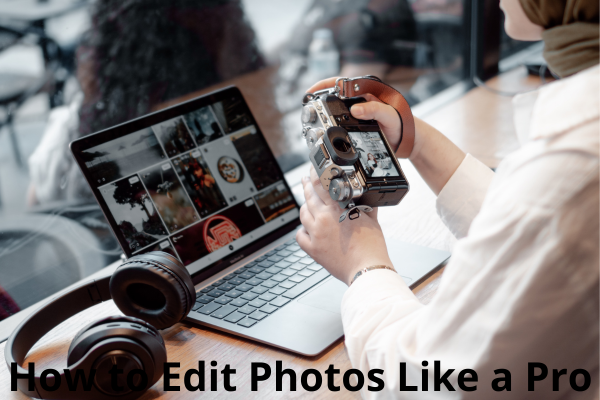Taking a photo is only half the process — the other half is editing. Editing allows you to correct mistakes, enhance colors, balance exposure, and bring your creative vision to life. But for beginners, photo editing can feel overwhelming with so many sliders, tools, and apps to choose from.
Don’t worry. In this beginner-friendly guide, you’ll learn how to edit photos like a pro using simple techniques, accessible tools, and an intentional approach — whether you’re editing on your phone or computer.
1. Why Editing Matters
Even the best cameras don’t always capture what your eyes see. Editing lets you:
- Fix exposure and lighting mistakes
- Enhance mood and emotion
- Create consistency in your portfolio
- Add your personal style
📌 Think of editing not as “fixing” a bad photo — but refining a good one.
2. Choose the Right Editing Tool
You don’t need expensive software to get started. Here are some popular options:
📱 Mobile Apps:
- Lightroom Mobile (free + paid): Powerful and professional
- Snapseed (free): Beginner-friendly with advanced features
- VSCO (free + paid): Great for filters and aesthetics
💻 Desktop Programs:
- Adobe Lightroom Classic: Industry standard for RAW editing
- Adobe Photoshop: Ideal for retouching and composites
- Capture One: Pro-level color grading
- Darktable or RawTherapee: Free alternatives for RAW editing
📌 Start with Lightroom Mobile or Snapseed if you’re new — they’re easy to learn and offer great results.
3. Shoot in RAW When Possible
RAW files contain much more image data than JPEGs. That means:
- Better recovery of highlights and shadows
- More flexibility with color and white balance
- Higher-quality final results
📌 Use RAW if your camera supports it. If you’re using a smartphone, apps like Halide or ProCamera can shoot in RAW.
4. Basic Editing Workflow
Follow these steps in order for a natural and clean result.
1. Crop and Straighten
- Fix horizon lines and distractions
- Use rule of thirds to recompose
2. Adjust Exposure
- Use the Exposure slider to brighten or darken the image
- Tweak Highlights and Shadows to balance contrast
- Use Whites and Blacks to define the lightest and darkest parts
3. Fix White Balance
- Adjust Temperature (blue–yellow) and Tint (green–magenta)
- Correct color casts caused by indoor lights or shade
4. Boost Contrast
- Adds depth and drama
- Use carefully — too much can flatten skin tones
5. Enhance Color
- Use Vibrance (more subtle) and Saturation (more intense)
- Consider using HSL tools to target individual colors
6. Sharpen and Reduce Noise
- Use sharpening to define edges
- Use noise reduction at high ISO or low light
- Don’t overdo it — keep skin and textures natural
📌 Tip: Zoom in to check sharpness and detail during editing.
5. Develop Your Own Editing Style
Editing is where your creative voice begins to shine. Over time, your style will reflect your personal taste.
Ask yourself:
- Do I like warm or cool tones?
- Do I prefer high contrast or soft images?
- Do I want my photos to look realistic or artistic?
Use presets (in Lightroom or VSCO) to speed up your workflow and keep consistency.
📌 Start by applying a preset, then fine-tune manually.
6. Keep It Natural (Especially for Portraits)
One of the biggest beginner mistakes is overediting — especially with faces.
Avoid:
- Oversharpening eyes
- Over-whitening teeth
- Removing all skin texture
- Extreme smoothing
Instead:
- Lightly enhance the eyes
- Remove temporary blemishes only
- Keep tones flattering but real
📌 People look best when they still look like themselves.
7. Use Filters Intentionally
Filters are fun — but don’t rely on them too heavily.
- Use filters as a starting point, not the final result
- Reduce filter intensity to keep the photo looking real
- Stack filters carefully if your app allows
📌 Overfiltered photos often lose depth and realism. Less is more.
8. Save in the Right Format
For social media or web:
- JPEG format
- Resolution: 2048px on the long edge is usually enough
- Sharpen slightly for screen
For printing:
- Use high-resolution files
- sRGB color profile for online
- AdobeRGB for print labs (check their guidelines)
📌 Always export at high quality. Don’t overwrite your originals — keep a backup of the unedited file.
9. Practice Editing Regularly
The more you edit, the faster and more confident you’ll become.
Try this:
- Edit the same photo three different ways (e.g., moody, warm, black and white)
- Re-edit your old photos with new techniques
- Follow photographers whose editing style you admire
📌 The goal is to build a consistent look and train your eye to know what a great photo feels like — not just looks like.
10. Don’t Try to “Fix” a Bad Photo
Editing can improve a photo, but it won’t turn a poorly composed, badly lit image into a masterpiece.
Instead:
- Focus on getting the best image in-camera
- Use editing to enhance, not rescue
- Accept when a photo doesn’t work — and learn from it
📌 The best editors are also the best shooters. Start there.
Final Thoughts: Edit With Purpose
Photo editing isn’t about making photos look “cool” — it’s about amplifying your story. Whether you’re shooting landscapes, portraits, or daily life, a well-edited photo connects more deeply with your audience.
Start simple:
- Learn your tools
- Keep edits clean
- Develop a personal style
Soon, editing will feel less like a chore and more like a natural part of your creative process — the moment your photo truly comes to life.
